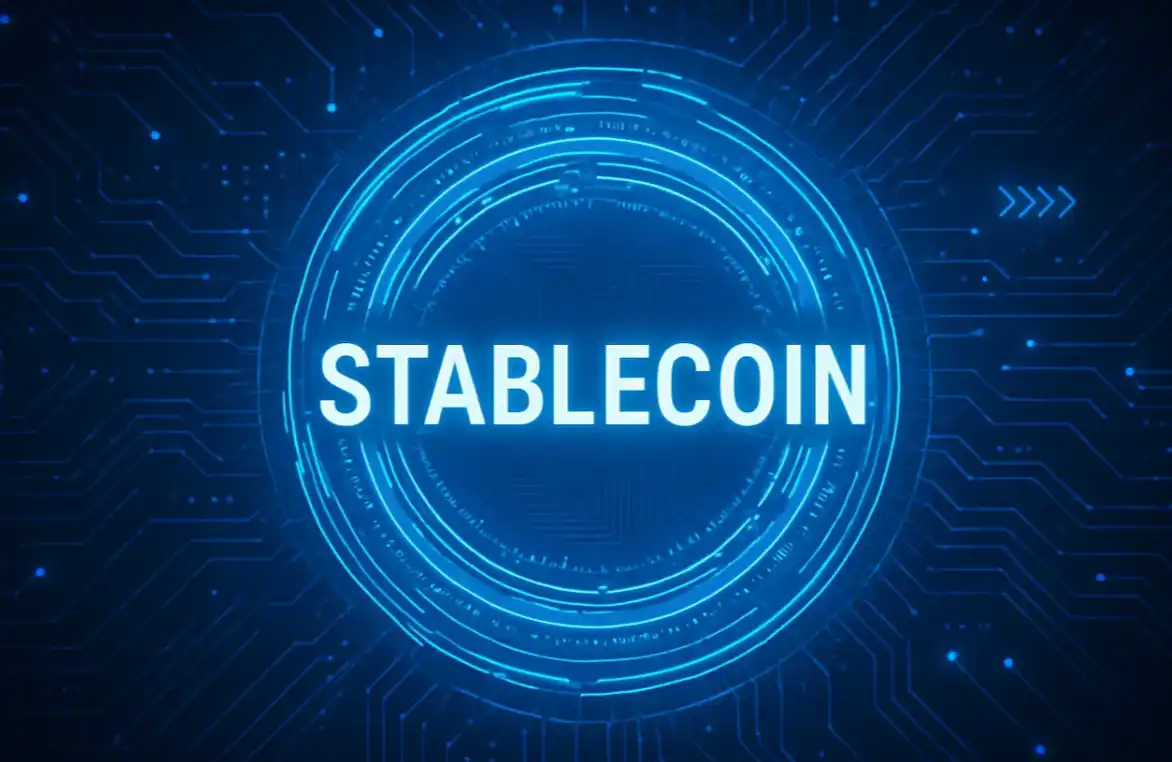Written by: Liu Honglin
On April 26, 1956, at the Port of Newark, an old oil tanker named "Ideal X" slowly sailed out of the port. In its hold, there were no gold, oil, or important dignitaries, but 58 uniform-sized, sealed metal tin boxes. At this moment, humans first witnessed the true significance of "containers".
There were no welcoming crowds, nor media reports. However, historians looking back later determined the significance of this day was no less than the roar of the steam engine or the birth of the internet. This metal box was not the commodity itself, but it reshaped the way commodities flow; it did not shorten the distance across oceans, but completely restructured the global supply chain.
Decades later, in the distant digital world, another "standard" is quietly rising. Its goal is similarly not to change the essence of currency, but to provide a unified interface for global monetary circulation. Today, we still cannot determine whether it will achieve the same status as the "container", but it already possesses all the conditions of a great invention: being misunderstood, resisted, and underestimated - yet changing the world.
A World Changed by a Tin Box
Global shipping in the 1950s was a chaotic realm.
Different countries, ports, and companies used different boxes, dock structures, and loading rules. Each international transportation was a multilingual negotiation and compromise, full of misunderstandings, delays, and costs.
At that time, loading a ship required hundreds of dock workers spending entire three days or even longer to load goods bag by bag, box by box. Unloading was even a nightmare: goods were often misplaced, dropped, or even stolen. Each port transfer meant unpacking and repacking, with cargo loss rates above 8% and labor costs shockingly high.
The departure of "Ideal X" involved only 58 boxes. But the efficiency revolution it brought could not be ignored. According to UNCTAD data, after adopting container transportation, loading and unloading costs plummeted from $5.86 per ton to $0.16, a drop of over 97%. Shipping time was compressed from weeks to days. Port operation time shortened from 72 hours to less than 8 hours, with turnover rates increasing by over 8 times.
Changes in employment structure were even more dramatic. New York port used 1.4 million worker-days in 1963, which dropped to 127,000 worker-days by 1975, a 91% reduction. An entire industry was redefined.
Humans were no longer the protagonists; standards became the order.
The structure of global trade also changed accordingly. In the 1970s, ISO adopted 20-foot and 40-foot containers as international unified standards, with global ports, trucks, warehouses, and ships restructuring systems around these two sizes. Shipping companies' competition shifted from battling human labor to competing on efficiency and networks.
Researchers like Bernhofen estimated that containerization increased bilateral trade between participating countries by 790%, while any form of free trade agreement at the time grew by only 45%. This was not an exaggeration, but historical reality. China's export miracle, Southeast Asia's manufacturing rise, Walmart's global supply chain model were all indirectly created by that tin box.
A country can be without a port, but cannot be incompatible with containers; a factory can be without a brand, but cannot be unfamiliar with container shipping processes.
This metal box took twenty years to restructure the entire planet's production and distribution logic.
Misunderstood Stablecoins: The "Container" of the Digital World
Stablecoins, upon their birth, were considered to have "no technical content".
In the eyes of geeks, they were not innovative; in the eyes of Bitcoin believers, they were not "decentralized" enough. And in the eyes of traditional financial regulators, they disrupted order, evaded regulation, and were a "gray area".
But what they were doing was precisely embedding internet liquidity into a consensual monetary standard.
If Bitcoin brought a decentralization attempt of monetary power, stablecoins brought standardization and efficiency optimization of transaction processes. Stablecoins do not have macro governance goals like central bank digital currencies, nor do they explore risk and reward boundaries like DeFi. They do just one thing: make "stable money" flow like code.
The effect of this has far exceeded expectations.
By 2025, global stablecoin on-chain transaction volume will exceed $27 trillion, approaching the annual total of global card payment systems. Among them, USDT accounts for nearly 60%, with a market value exceeding $155 billion.
The advantage of stablecoins is not in the currency value itself, but in its on-chain liquidity. It connects cross-chain, cross-border, and cross-account settlement scenarios, enabling a Ugandan fruit exporter to receive payment within 5 minutes instead of waiting five days for a bank wire transfer.
According to McKinsey and Chainalysis data, stablecoin cross-border payment fees are as low as $0.01, compared to traditional SWIFT's average 6.6% fee and 3-7 day transfer period, representing an order of magnitude improvement in cost and efficiency.
Of even more structural significance is financial inclusivity.
Over 1.7 billion adults worldwide have no bank account, but most have smartphones. Wallet + stablecoin = simple bank account. You don't need KYC, don't need a credit score; with just a USDT address, you can receive payments, transfer, and manage finances. In countries like Nigeria, Venezuela, and Argentina, stablecoins are almost a substitute currency - they are exchange rate anchors, anti-inflation safe havens, and a choice of civilian monetary order.
During the Ukraine war, stablecoins became "digital cash" for refugees, completing fundraising, distribution, and procurement through Telegram Bot, without relying on any government or bank.
From cross-border payments, remittances, and salary disbursements to Web3 on-chain protocol settlements and AI agent intelligent account settlements, stablecoins are becoming the world's "digital container" - not the headline of financial revolution, but the "chassis" of financial system circulation.
Why "Standards" Change the World, Not "Technology"
Why are technological revolutions often "silent"? Why do those that truly reshape world order not come from eye-catching innovative breakthroughs, but from "standards" that quietly crawl into every system's crevices?
Because standards are not inventions; they are order.
Technology can be closed and localized, but standards must be shared and system-level. They are not driven by performance leadership, but by widespread acceptance.
Containers are not high-tech, but because "everyone can use them", they became the foundation of global shipping. They are not a product of one company, but an interface layer for the entire industry. Over 90% of international trade still depends on unified containers today.
Stablecoins are following a similar path: it's not the victory of a specific protocol, but a gradual process of a universal liquidity standard gaining mainstream recognition. It's not the end of transformation, but the starting point of a new order. This is the true power of standards - enabling collaboration between untrusting people and systems without the need for negotiation.
Currently Underestimated, Future Being Shaped
We are standing at the "1956" of stablecoin history.
It has not yet become a world-class mainstream standard. Countries are still weighing its legality; traditional finance still views it as a "temporary tool"; most users are still unclear whether they are using USDT, USDC, or Dai.
But the order has quietly changed.
Hong Kong has passed the Stablecoin Regulation, and the US is advancing compliant issuance. Payment giants like Visa, Mastercard, and Stripe have announced compatibility with stablecoins. Digital banks like Chipper Cash in Africa and Bitso in Latin America have made stablecoins their primary focus.
From crypto to payment, from payment to application, from application to protocol layer - stablecoins are becoming the "universal interface of global internet economy". And its potential lies not in complexity, but in being simple enough, universal enough, and neutral enough.
It may not replace central bank currencies, but could become the "underlying settlement protocol" for collaboration and value circulation between new systems like Web3, AI, and IoT.
We will ultimately understand that what changes the world is often not the most imaginative invention, but the most unassuming "standard".
Containers did not change a ship's power, but they changed the way the world transports goods. Containers did not eliminate ports, but made them efficient.
Stablecoins will not replace banks, but make "having bank functions" an open-source option. Stablecoins have not reshaped the essence of money, but they may redefine the boundaries of clearing, collaboration, and financial coverage.
The future global clearing network may be woven from algorithms, smart contracts, and consensus mechanisms, with its underlying circulation unit possibly being digital "containers" defined by code.
It is inconspicuous, yet it leverages the world.








